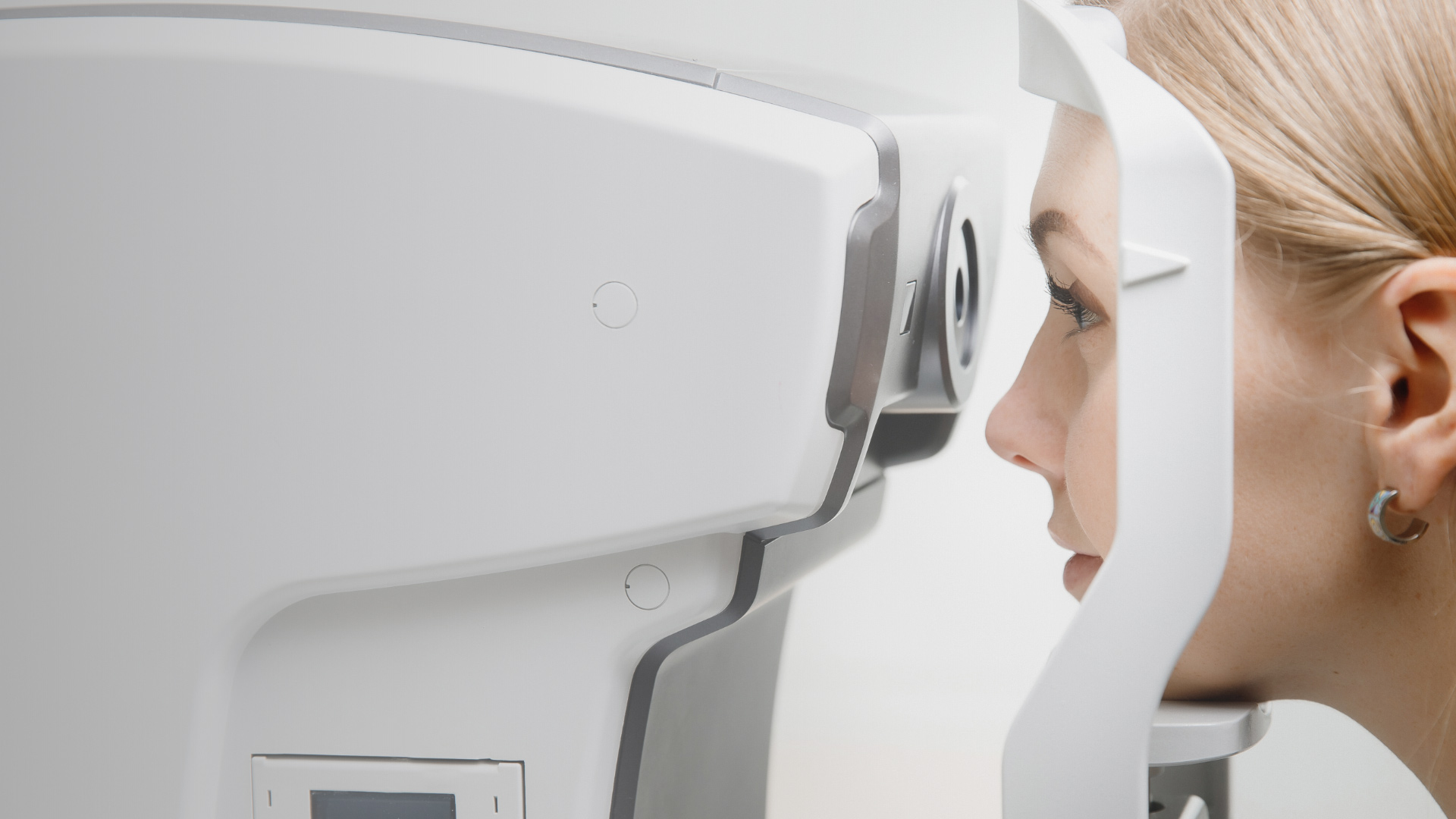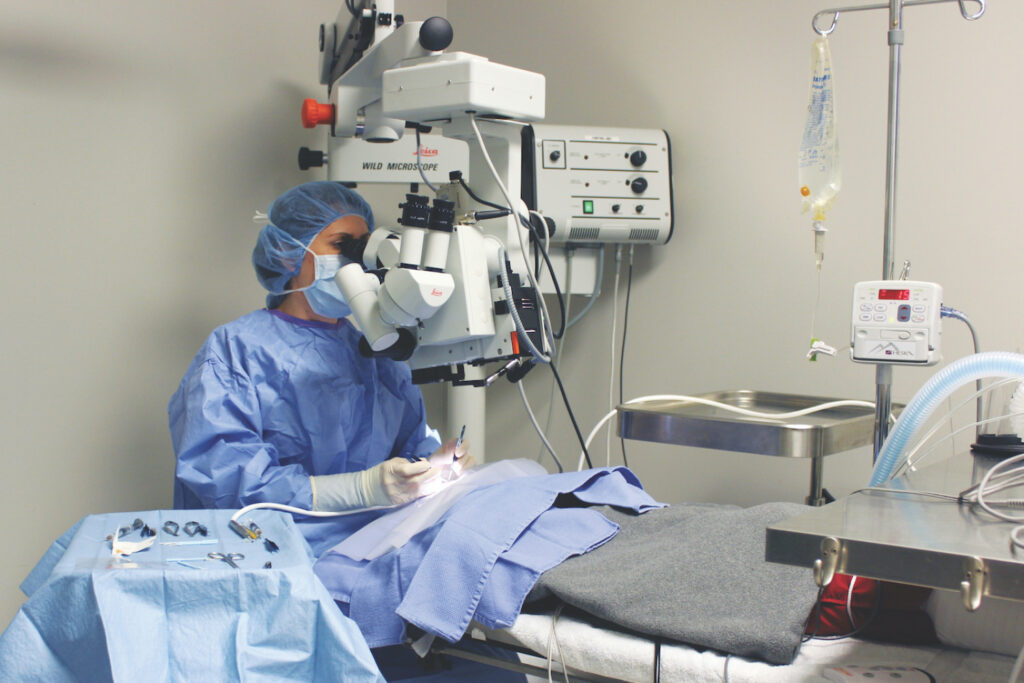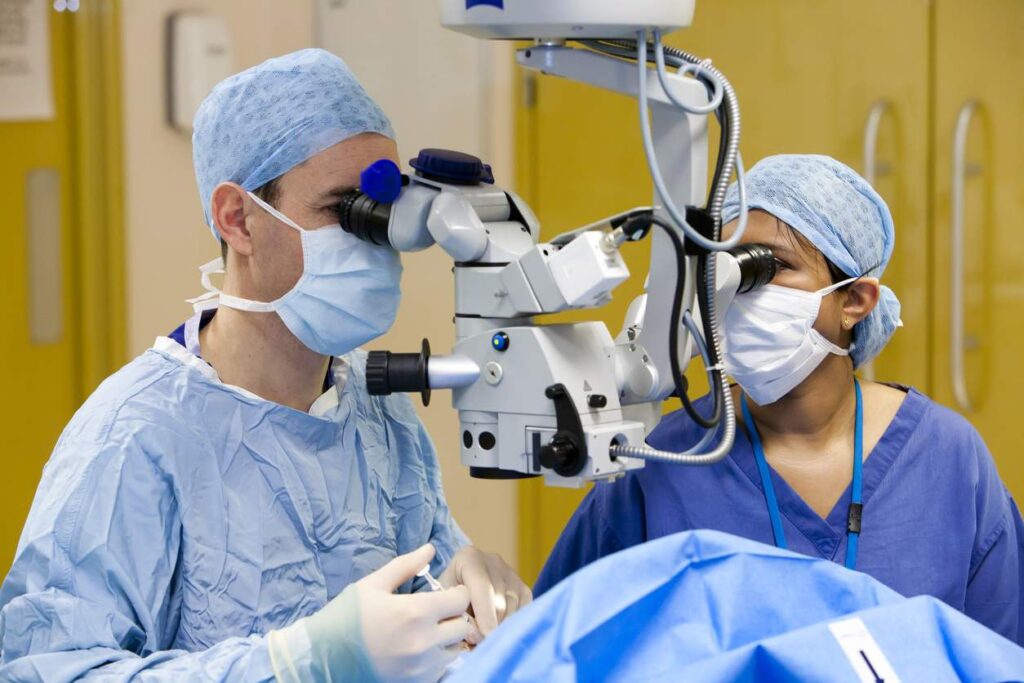Expect these complications after a cataract eye surgery

Cataract eye surgery is a common outpatient procedure that is usually painless. However, like with any surgical procedure, there is the risk of complications.
Proteins make up the tissues, muscles, and even the blood that make up the human body. Over time or as a consequence of injury, certain proteins might collect in specific areas.
Proteins in the lens of the eye breakdown and form clumps when cataracts occur, resulting in cloudiness that may impair or obstruct vision.
A surgical operation to remove the lens and replace it with an artificial lens is the answer. When cataracts start to interfere with daily activities, your doctor may recommend cataract eye surgery.
Edema, pain, infection, and bad reactions to anesthetic drugs are all possible complications.
Complications
Any surgical procedure has the potential to cause problems. Your surgeon will be aware of a variety of specific issues that might arise as a result of cataract eye surgery.

1. Uneasiness
The majority of surgical procedures result in pain as a side effect. Because cataract eye surgery only affects the eye’s surface layers, over-the-counter pain relievers are frequently enough. If the soreness remains or worsens, see your doctor. This might signal the existence of a more serious problem.
2. Asphyxiation
In individuals with diabetes, hypertension, or other pre-existing illnesses, suprachoroidal bleeding may occur after cataract eye surgery. Although this is a rare occurrence, it needs immediate intervention to avoid vision loss.
3. Exposure to contaminants
Infection may occur during most operations owing to surgical tools, surgeon expertise, or postoperative wound care.
Endophthalmitis is an infection that may develop as a result of cataract eye surgery. It is, nevertheless, a rare occurrence, occurring in fewer than 0.5 percent of cataract operations.
4. Long-term or new visual problems
Cataract eye surgery is not always successful, and you may have visual problems or impair your eyesight after the procedure. This is a rare consequence, although it is more likely in people who had other eye problems previous to surgery in addition to cataracts.
As your brain adapts to a new, crisper view, you may experience temporary double vision after eye surgery.
5. Floaters
Floaters are small collagen or protein particles that may penetrate your range of vision and cast shadows. While floating normally does not need treatment, it might sometimes be a sign of a more severe illness.

6. Dry or itchy eyes
Throughout the healing process, dryness and discomfort are common. It’s possible to have itchy, gritty, or dry eyes. To help with this, your doctor may prescribe lubricating eye drops. Consult your doctor about when to start using eye drops after cataract eye surgery.
7. Symptoms of allergies
During cataract eye surgery, general anesthesia is seldom utilized and is usually reserved for young patients. To numb the eye, a topical anesthetic in the form of eye drops or a local anesthetic in the form of an injection may be used.
If you are allergic to any drugs, talk to your doctor before surgery.
8. Irritation
“Cell and flare” refers to inflammation caused by slight eye injury after an s. It is not regarded a true complication, but rather a predicted consequence.
When your surgeon makes contact with your eye, a little amount of white blood cells or protein may collect in the front chamber, impairing vision or increasing light sensitivity. This is a short-term condition that may be treated with topical steroids.
9. Edema of the cornea
This is a common side effect of surgery, but one that should be taken seriously. Swelling of the cornea may happen anywhere after surgery, although it’s more prevalent at the incision site. In this case, topical steroids may be administered to reduce edema.
10. Increased pressure
Up to half of individuals who have cataract eye surgery have an increase in ocular pressure after the procedure, however this usually goes away within 24 hours.
Persistent problems with increased or decreased eye pressure after surgery may be linked to other eye illnesses, such as glaucoma.

11. Iris prolapse
Surgery may cause iris trauma, resulting in a prolapsed iris in rare cases. This is sometimes linked to poor wound closure or healing at incision sites, as well as prolonged periods of high intraocular pressure.
The iris can sometimes be moved, but in more serious cases, more surgery will be required.
12. Bleeding from open wounds
Another uncommon problem is wound leaks, which occur when fluid seeps around the incision sites. Fluorescein dye is used to detect these leaks, which are frequently treated with steroids.
In some cases, your doctor may apply a bandage contact lens or perform corrective surgery to resolve the problem.
13. The Toxic Anterior Segment Syndrome
This condition can be identified by severe swelling and discomfort in the days following cataract surgery. Toxic anterior segment syndrome is an extremely rare illness brought on by infected surgical instruments or eye drops.
High doses of steroids and analgesics are used to treat this illness, which can be difficult to distinguish from endophthalmitis.
14. Early stages of acute endophthalmitis
This is a different type of infection that can develop three to seven days after surgery and cause swelling and pain. The use of steroids to treat this eye infection is ineffective. Antibiotics are frequently used to treat it, or it is referred to a specialist.
15. Retained lens fragments
Following cataract surgery, small fragments of your natural lens may remain in some cases. The following symptoms may appear days, weeks, or even years later:
- Blurred vision
- Light sensitivity
- Tearing
- Flushing
If lens fragments are discovered to be the source of the problem, they should be surgically removed – ideally by the same physician who performed the original treatment.
16. The posterior capsular layer is opacified.
This is a fairly common late complication that affects anywhere from 14 to 60% of cataract surgery procedures. This condition, which is more common in diabetics and those who have had previous eye surgery, causes microscopic particles to become stuck in the layer behind the lens.
Elschnig’s pearls are small transparent bubbles formed when these particles combine. This problem can be fixed with a procedure known as laser posterior capsulotomy.
17. Macular edema cystoid
This is the most common complication of most cataract surgeries, and it can happen up to eight weeks after the procedure. It occurs in approximately 1% to 2% of all cataract operations.
An accumulation of fluid in the eye causes swelling, which can impair vision. This disease, which can last up to two months, is usually treated with topical steroid and nonsteroidal medications.